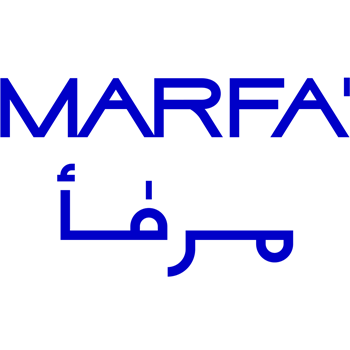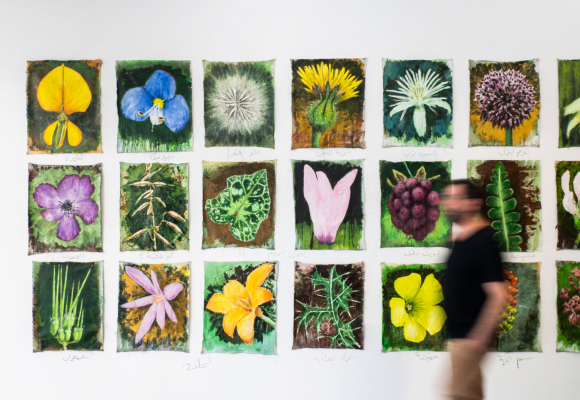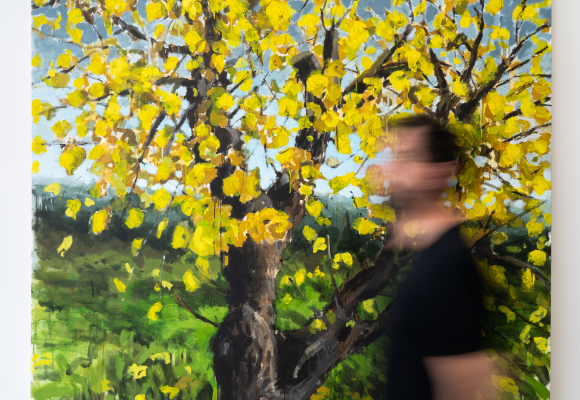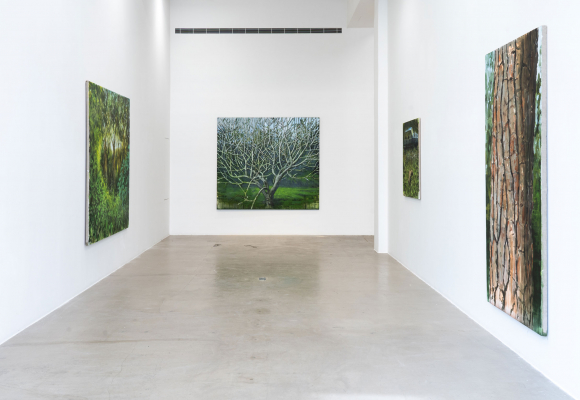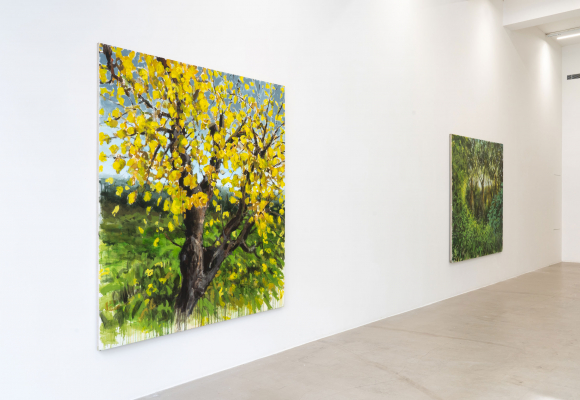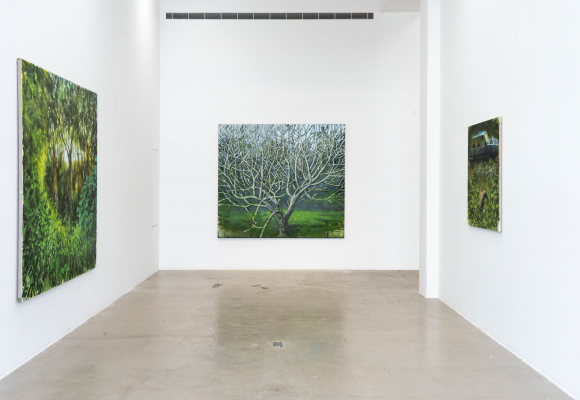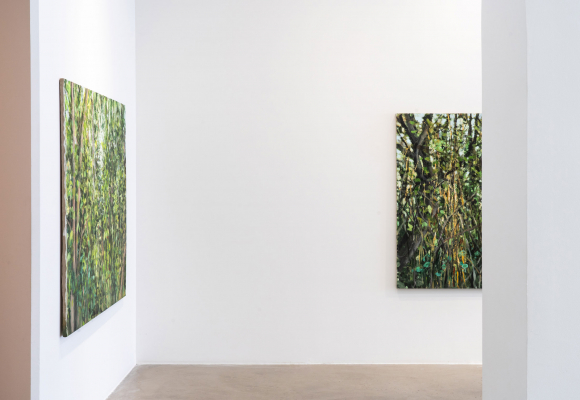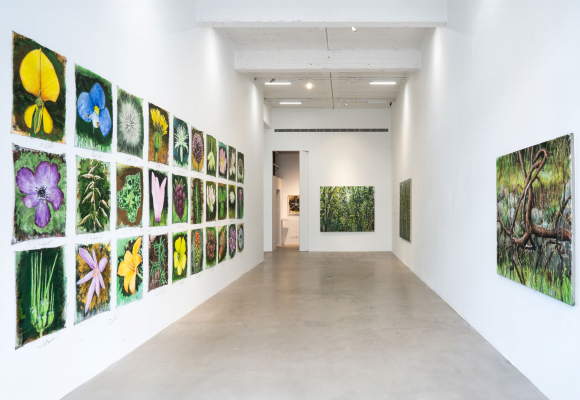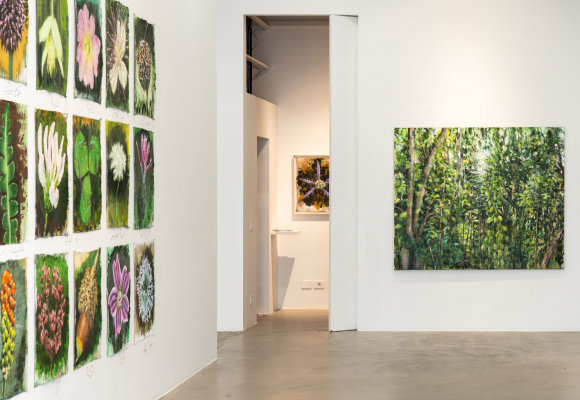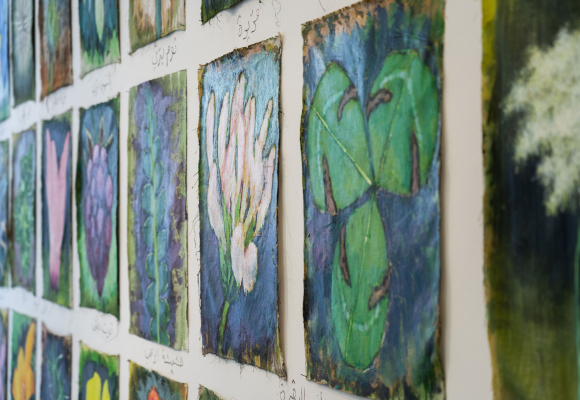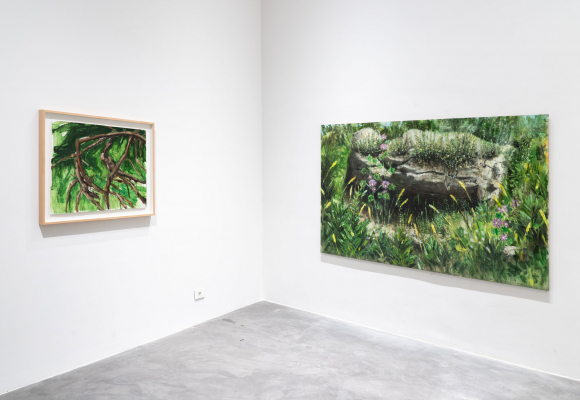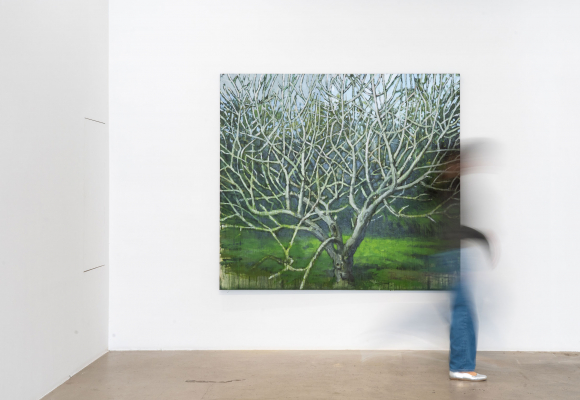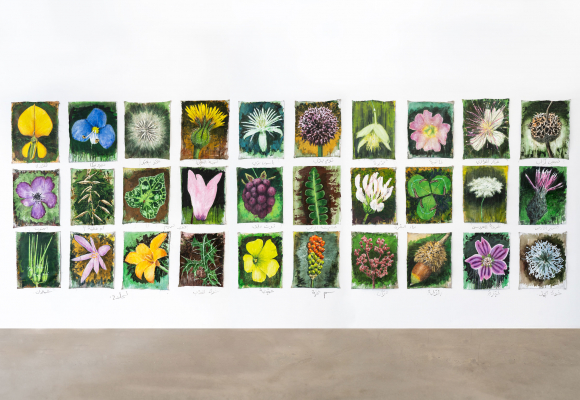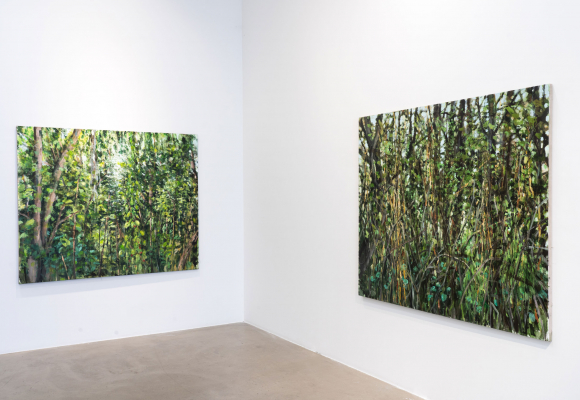Omar Fakhoury
The Forest
13 March 2024 - 17 May 2024
What is the Forest?
The Forest is a series of portraits of places and plant species from my childhood forest in Beit Chabab, Mount Lebanon.
It all started with the desire to revisit a very specific rock where we used to play and hide things. It looked like a terrace from above, while its lower part resembled an open mouth. It was the heart of the forest. Standing before it 25 years later was overwhelming, as if a portal had opened and I just kept coming back.
Painting this forest has been lurking in the back of my head for a while. Revisiting it after many years, painting became an urge. It was an excuse to repeatedly return to the site, to the extent where I was no longer able to locate the periphery or the center: was it the studio or the forest?
It’s like a stroll through different timelines into abstract fragments of memory where everything is a surprise. Sometimes a familiar scent hits your nose, emanating from the plants, the mud or the stinky stream nearby. Other times, you are happy to meet a new species that wasn’t there during your last visit. All of this takes you back to a very primordial state.
The Forest recollects these places that used to be my immense playground as a kid and canvas as a teenager. Through this exhibition, I somehow find myself repainting my first paintings.
Your previous paintings consisted of residues of human-made objects and architecture while these have no discernable trace of human presence
I think that the forest I reencountered is today rarely frequented. Few people venture into it, and most of the trails I once knew have largely disappeared. Comparing photographs, I had taken when I was 17 with ones taken today, wilderness has clearly reclaimed the space. The human presence I could see was mostly found ‘By the Stream,’ which depicts an encounter with the skull of a goat standing in front of an abandoned Renault 12.
The larger paintings are of very specific sites. How did you decide which ones to paint?
These paintings are portraits. A portrait is more immediate and intimate, with one of its functions being to take possession of someone or something.
The majority of the sites in these larger paintings evoke a sort of fragmented map of places carrying emotional connections. Some others are simply recent discoveries. ‘Hiding from the Rain’ is a place we used to shelter. ‘Sunday Afternoon’ captures the bucolic stage of our many picnics. In the midst of old vineyards that are today corpses, the light grey branches of a fig tree contrast sharply with the landscape and are hard to miss. I could also not help but paint my father’s favorite mulberry tree facing our family home. Etc.
Can you share the process behind selecting the titles for the various flower and plant specimens?
From ‘Cow Tits’, ‘Lying Sage’, ‘Jackal’s Cucumber’ to ‘Brain in its Chest’, each of these colloquial names were born over time and have been around for generations. They are playful, rich, and complex, telling the intricate story of a collective imagination that gave a name to a form.
I remembered some of the names. For others, I had to ask around and reach out to friends or shepherds. I eventually joined WhatsApp groups with forest enthusiasts across the country. Some plants bear multiple names, depending on the area or region they come from, so I chose a single name to represent each specimen.
How did you then make this choice?
I chose what I felt had the most poetic or ludic nature, deviating from its original scientific name. I even allowed myself to rename Wild Oat to ‘How Many Sins?’ in reference to a game we used to play as kids by tossing its seedlings towards a friend. Counting the ones that clung to their clothes would tell us how many sins they did not confess.
Will you continue to explore the forest after the exhibition?
When I started this project in July 2023, I promised myself I would cover a one-year cycle of the forest, so yes, these visits and this work are ongoing.
Conversation between Omar Fakhoury and Joumana Asseily
